Did you know advertising research has shown that the emotional response to ads impact consumer’s intent to buy by a factor of 3-to-1 for T.V. commercials and 2-to-1 for print?
It’s also long been recognized that Atmospheric Marketing – or “the effort to design buying environments to produce specific emotional effects in the buyer that enhance purchase probability” – has been an effective way of increase purchases for physical retail locations.
So the question is, does emotion play a role in making more sales online?
If so, how can you develop an emotional thread that keeps people connected through each step of the buying process?
In this article, we’ll look at the role that emotional design plays in expanding reach, the influence emotion has on decision making, and we’ll even answer the age old question of does emotion impact B2B?
We have a lot of ground to cover, so let’s jump right in.
The Role Emotion Plays In The Most Shared Content
Before we look how emotion affects sales, we have to ask if emotion plays a role further up the marketing funnel – specifically for driving awareness and getting more reach.
As it turns out, yes. A study by two University of Pennsylvania professors found that the most shared content on the New York Times website also had strong emotional undertones – in particular Anxiety, Awe, and Anger.
What’s important to look at isn’t the exact emotion that received the most response, but rather the range and intensity of emotions that performed best, and the context of the site.
Consider that NYT.com readers are on average 44 years old, have an average income of just under $75,000, over 50% are college educated, and over 25% work in some professional or managerial position – it makes sense that awe or anger inducing, opinionated articles perform the best on the left-leaning news site.
So it’s not enough to say “be more angry and expand reach.” If New York Times readers were younger, made less money, or had a different education, the emotions tied to the “most shared” content would be very different. More importantly, research indicates that “emotionally evocative” content would still outperform “non evocative” content, if the emotion aligned with the reader’s perspective.
The research did find a more universal theme though; when an article had an additional cognitive impact – like giving the reader practical utility – it increased the likelihood of being shared.
In a separate study done by viral content agency Fractl, they showed participants 30 of the top 100 images on Reddit, asking them to look at the image, then to the corresponding emotion on Robert Plutchik’s Wheel Of Emotion.
Similar to the findings in the New York Times study, they found the most shared images on Reddit were also emotionally evocative, with Surprising, Amazing, and Interesting being rated highest.
What’s interesting about the second study though is how differently the emotions are weighed and, more specifically, how small a role “Anger” plays in the most shared photos on Reddit.
How is it that “Anger” is the strongest motivator for sharing on NYTimes while “Curiosity” is the primary motivator for Reddit? I think it boils down to two reasons:
1.) Reddit’s Demographic is very different from NYTimes.com. Reddit’s primary demographic are 19-29 year old males, NYtimes readers are 44 year old men and women. The emotions that evoke the most response are different because the demographic’s have had very different life experiences.
2.) Images can evoke certain emotions faster. In the second study, the top results were Surprising, Amazing, & Interesting. These are emotions are quickly communicated through images and require little explanation as to why you should “feel” a certain way.
On the other hand, emotions like “Anger” or “Anxiety” might require the viewer to spend more to become more familiar with the issue and let the emotion simmer – which is why they’re stronger emotions on a site that’s primarily text articles.
So What Does This Mean For You?
It means that if emotion plays a role in sharing at the top of the funnel, it definitely plays a role at the point of sale further down the road. (Scientific proof on that in a bit)
But it also means that you need to thoroughly understand your audience and their “emotional baseline” in order to develop a strategy that hits all the right emotional notes before reaching the final call to action.
For example, let’s say you run a Tax-Relief service. Your prospect has been putting off their tax problem for some time, so it’s a BIG DEAL they’re on your site in the first place. They’ll likely need to a dose of anxiety to remind them the problem they’re trying to solve is very real, but also need signs of relief and reassurance that the problem is manageable and worth fixing.
Because this takes more time to communicate, you’d likely use long form pages or even better, an email drip campaign to communicate over a longer period and properly tune their emotions to a place where they feel empowered (not pressured) to solve the problem. Overall, the campaign would involve a lot of text.
On the other hand, if you sold something like gifts for geeks, the sales cycle would be shorter, and the bulk of your emotion and “personality” could be communicated visually through bold images and nifty font choices.
Yes. Emotional Design Influences Sales
The truth is, Atmospheric Marketing affects our emotions and buying decisions just as much in the digital world as it does in the real world.
In Effects of Web Atmospheric Cues on Users’ Emotional Responses in E-Commerce, researchers Hong Sheng and Tanvi Joginapelly found that websites with a stronger emotional impact produced a greater intent to buy.
In the study, subjects were asked to find a pair of sneakers from three different websites with varying levels of atmosphere and interactivity.
Using Russell’s Circumplex Model, a method that’s been used to measure emotional engagement for retail consumers for a number of years, researchers could compare this test’s data to similar studies that have taken place in real world environments.
“Online shoe stores were chosen because they typically sell similar products; therefore, participant’s purchase decisions were expected to be influenced less by the design features of the products than by the web design and web atmospheric cues.”
Researchers presented three websites with low, medium, and high interactivity and atmospheric qualities and monitored subjects pupil dilation, skin response & heart-rate as well as asked participants to fill out a questionnaire afterwards.
What they found was that as interactivity and atmosphere increased, participants became more engaged and interested.
What’s interesting though is the Medium Interactivity and Atmosphere site also had the most people on the satisfied side of the chart, indicating that too much interactivity and atmosphere may be overwhelming .
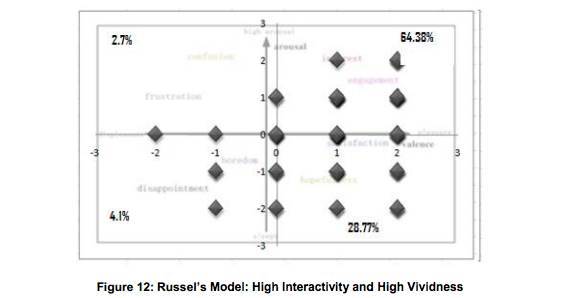
In the end, the researchers concluded “that better design and higher levels of web atmospheric cues have a positive influence on consumers’ emotional states” and a strong impact on purchase outcomes.
So now that we know for sure emotion can impact sales, let’s see what it looks like if strong emotions are weaved throughout the entire online sales process.
Case Study – Rehabs.com Shows You Your Face On Meth, Gets 4 Million Views
Resource site Rehabs.com faced a serious problem:
Over 65% of American families are affected by addition to alcohol and hard drugs. Unfortunately, 67% of Americans admit to there being a stigma against people in recovery, and 74% admit to being ashamed to talk about a family member’s addiction.
If nobody is comfortable enough to talk about the problem, how can the problem be fixed?
Viral agency Frac.tl’s answer – You show in shocking, unavoidable detail just how bad the problem actually is.
Between this infographic, a video (design), the “Your Face On Meth” Facebook app – which transforms your face into a habitual meth user (interactivity)- and 4 additional campaigns, Rehabs.com made it difficult for viewers to ignore the monstrous transformation hard substance abuse brings on a person.
Overall, the campaign grabbed the attention of multiple celebrities, news outlets, and was covered on over 1,200 unique websites (like Huffington Post, Business Insider, The Daily Mail, and more) resulting in:
- 4+ million views
- 8,500 tweets
- 316,000+ likes
- 1,200 links
But most importantly, the emotion of this campaign sparked an 850% increase in treatment related searches, and Rehabs.com experienced record breaking placements with treatment facilities across the country.
Because Rehabs.com makes it’s money as a lead generation site, this emotional campaign was a huge success.
Case Study #2 MailChimp Gets A Friendlier Design – Increases customer base by 600% In A Year
Before:
For something a little lighter, in February of 2008 Mailchimp hired User Experience designer Aaron Walter and logo designer Jon Hicks to give the MailChimp experience the friendly vibe we’ve come to expect from the brand.
If you squint, you can see in the “before” photo the tagline “We make email marketing powerful, easy, & fun”
While that may have been a true statement about the product, there’s very little on that landing page that screams “fun” or “easy” because it looks very similar to many other email providers at the time.
After:
Over the course of a year, Aaron introduced several changes to Mailchimp’s back end – like adding a color picker for text, Color Themes, HTML Editor and more.
Around the same time frame, the Mailchimp’s Mascot Freddie von Chimpenheimer got a very fun redesign. After the redesign, Freddie started popping up in different areas of the site, giving funny quotes in the dashboard, making 404 pages more humorous, and on the log in screen to welcome visitors.
This may seem like a small thing, but the focus bringing this friendly, welcoming experience to the forefront was the catalyst for Mailchimp’s most substantial growth spurt. See, Mailchimp had already been around since 2001 and it took them from 7 years to reach their first 10,000 customers.
It was only after focusing on the customer’s emotional experience, they grew from 10k customers to 60k customers in 2009, then from 60k – 350k in 2010, and eventually to the point where they were adding 5,000 new customers a day (adding 1.4 million customers total) in 2012.
Yes, there were other factors at play like the addition of new products, and increased marketing efforts, but these things wouldn’t have paid off nearly as well without the emphasis on creating a fun, friendly experience first.
As a benchmark for how powerful this has been, let’s look at MailChimp’s competitors:
- Aweber (est. 1998) – 120,000+ customers
- GetResponse (est. 1999) – 300,000+ customers
- Constant Contact (est. 1998) – 500,000 customers
Please note: this is not to be a statement about quality of service, but rather the impact emotional design has had for Mailchimp. It’s important to note that Aaron Walter, their chief of UX wrote the book on designing for emotion, which is essential reading if you want to go deeper into this subject.
So, What Are The Ways You Can “Create” Emotion?
Now that you seen the spectrum of emotions that provoke the most response and know that emotional design has a definite impact, the question is, how can you convey those emotions through different areas of your online (and offline) presence?
Using Copy To Communicate Emotional Benefits
Nothing particularly mind-blowing to share about copywriting here, but because it’s the method with the lowest barrier to entry, it’s important to include.
The copywriting cliche, “Focus on the benefits” isn’t always about the benefit of the product brings , it’s about the emotional benefit that the product (or service) delivers afterward.
Hubspot put together a list of 10 companies that nail copywriting that you should look at if you want to take your copy to the next level. One of my favorite examples was from UrbanDaddy.com
Notice how the copy makes the reader feel more handsome, sophisticated, and like he already has good taste? Also notice there’s no mention of how comfortable or long lasting the shoes are? This copy is perfect for a buyer that values appearance more than cost or comfort.
Without being overt, it also describes the ideal customer, making it easy for others to refer the company, or buy a gift for the stylish man in their life.
How do you know if your copy is any good? Ask yourself – does the buyer feel smarter, sexier, cooler, richer or more powerful, simply by reading?
The Body Language Of Typography
When you’re talk to sales people in the real world, there are a number of visual cues – like tiny facial expressions, body language, and subtle tics – that tell you if they’re genuine, or just trying to make a dash for your wallet.
These “micro-emotions” as Malcolm Gladwell calls them, are the metadata of human interaction. Whether you realize it or not, you pick up on the tiniest signals getting “vibes” from everyone around you. The last time you may have felt this strongly was after a friendly conversation with a new person, then thinking “Huh, I don’t think they liked me.”
In most marketing media the only “body language” we have, so to speak is through using fonts to reinforce the “vibe” you’re trying to evoke. So if the idea is to present as much information as possible, with as few elements – one of the best ways to do that is by having a keen awareness of what typography communicates about your brand.
“…when people read about an exercise regimen or a recipe in a less legible font, they tend to rate the exercise regimen more difficult and the recipe more complicated than if they read about them in a clearer font.” -From “9 Things to Know About Influencing Purchasing Decisions“
Turns out, legibility’s effect on perception is isn’t the only piece of the equation. The characteristics of the font can have a dramatic effect on the reader’s overall mood.
Kevin Larson, a psychologist for Microsoft, published in “The Aesthetics Of Reading” (2006) that fonts could cause readers to become more relaxed, put in a good mood, or become agitated – simply because of the characteristics of a font.
They found that when the font put people in a good mood they would read more, lose track of time, and were capable of completing a task afterward. Conversely, they found that readers who were exposed to “bad” typography became more agitated, aware of the time, and unable to perform the exact same task as those exposed to good type.
That’s not to say that all type should be “beautiful” but rather, to consider the mood you want people to be in when they consume your content, then select a typeface to enhance the mood.
Setting The Tone With Color
I’m not going to dive into too much detail on this here, because Gregory Ciotti has created one of the most comprehensive pieces you could read about the psychology of color on the Help Scout blog. Open it in another tab and read it when you’re done here.
What you need to know about color is that color alone won’t evoke some super-specific emotion. Things like personal preferences, culture, and the context of how the color is used all play a role in how it effects us.
With color, it’s more important that the color supports the tone of what you’re trying to create, than it is to use superficial descriptions like “blue means calm” or asking “which color converts the best?” to guide your decision.
Motion & Sound To Set The Mood
Movies, television, and advertisements have been using motion and sound to create emotions in viewers for over 125 years. Now that video is so technically easy to use online, it wouldn’t be right to not include it here.
Because your sales videos are competing for same attention bandwidth as funny baby videos, it’s important you expand your thinking beyond sales video techniques and strive to create something memorable.
This “Embrace Life” safety ad does this well & relies almost entirely on using motion and sound to conjure up very powerful emotions.
Make no mistake though, creating a video that invokes an emotional response is anything but easy. This case study breaks down the many reasons why the ad is effective. From the colors, it’s use of symbolism, how it uses the camera, and the music selection, there are several subtle elements working together to convey a simple, but unforgettable message.
Watching something that is that powerful, it’s hard to remember that the video still uses basic building blocks for video making. This video by Film Riot shows you what those building blocks are – which can be handy when planning your next explainer video.
Along with motion, music plays a very powerful role in developing an emotion. Though, music scholars dispute as to whether music can elicit a true emotion in a listener.
In a study by Carol L. Krumhansl – An Exploratory Study of Musical Emotions and Psychophysiology, found patients had appropriate physical responses to “sad, scary, happy, and tense” music – proving there is an emotional link – but other research suggests these may not be “real” emotions, but rather “aesthetic” emotions, or “moods” which can govern a whole emotional spectrum.
So, like color, motion and sound are known to influence the viewer; but work best when performing like dancers executing choreography, not day laborers who seemed right for the job.
When Composition Directs Your Eyes To What Matters Most
How you compose things – whether static or in motion – can communicate a lot about the emotional impact you’re trying to make.
Going back to the “Embrace Life” video, if you pulled one key frame from this video, you still get the sense of motion, but more importantly the composition helps you understand explicitly what image is about. Do you see it?
Composition of the static elements on the page create an “eye path” for visitors, and provide a sense of direction for where to go next.
By understanding how people view websites, you can direct the eyes in a way that provokes subtle emotions as they move along the page.
Take the picture above for example. The photo uses the mountains on the left, and the waves below and behind the surfboard to draw your eyes to the surfer. Subtle directional cues from the surfer’s right arm and head then direct your eye to the “Craft your own lines” then you instinctively look to where standard navigation is found.
On a subconscious level, by the time your eyes reach the navigation, you’ve experienced the freedom of being a surfer (because he’s the focal point of composition) , the rebellion of doing your own thing (because your eyes are drawn to the tag line next), and the inner peace of doing it all by yourself (the light blue space between tagline and upper navigation).
The composition of this website uses Gestalt Psychology design principles to direct your eyes toward key images. In a fraction of a second, your brain associates the images with an emotion then “fills in the blanks” to connect those associations and decides what to do next.
Yeah, But Does More Emotion Work For B2B?
That’s the million dollar question, isn’t it?
The answer – yes.
In a six year study by customer experience firm “Beyond Philosophy”, researchers studied over 30,000 data points for both online and offline B2B sales, and found that with the exception of “safe”, B2B customers actually relied on their opinions more than B2C customers when engaged in the buying cycle.
Now let’s unpack that for a second. Why would a B2B customer value their emotions more?
- A bad purchase could endanger a buyers job?
- A good purchase might lead to a bonus?
- Or promotion?
- Or more productivity for the business as a whole?
Think about it.
Recommending the wrong brand of pizza for the company party rarely puts your job at risk, but selecting the wrong lead management software, or telephone system, or shipping provider could cost the company thousands in lost revenue.
A report by the Corporate Executive Board has found that more people express emotional connections with B2B brands than with B2C.
The study also found that B2B brands who connect with buyers on an emotional level see 2X impact of other B2B companies selling on a purely business or functional premise.
They also found that B2B buyers who have a “high brand connection” are around 60% more likely to consider, purchase, and pay premium rates for low connection competition. More surprising, 86% of B2B buyers feel that the Unique Selling Proposition is dead.
If those numbers surprise you, they really shouldn’t. After all, they are still people on the other side.
Conclusion – Emotion IS Important
Thing is, the novelty of “Ooooh, Internet” has been wearing off for quite some time, and as more and more people do their shopping online, the function of just having what someone wants isn’t going to be enough. It never has been.
Marketing professor Philip Kotler said in 1974, “Buyers respond to the total product. It includes the services, warranties, packaging, advertising, financing, pleasantries, images, and other features that accompany the product.
One of the most significant features of the total product is the place where it is being consumed. In some cases, the place, more specifically the atmosphere of the place, is more influential than the product itself in the purchase decision.”
Now, anything you could ever want is just a Google search away.
The question is, how are you going to design the best buying atmosphere for your customers?

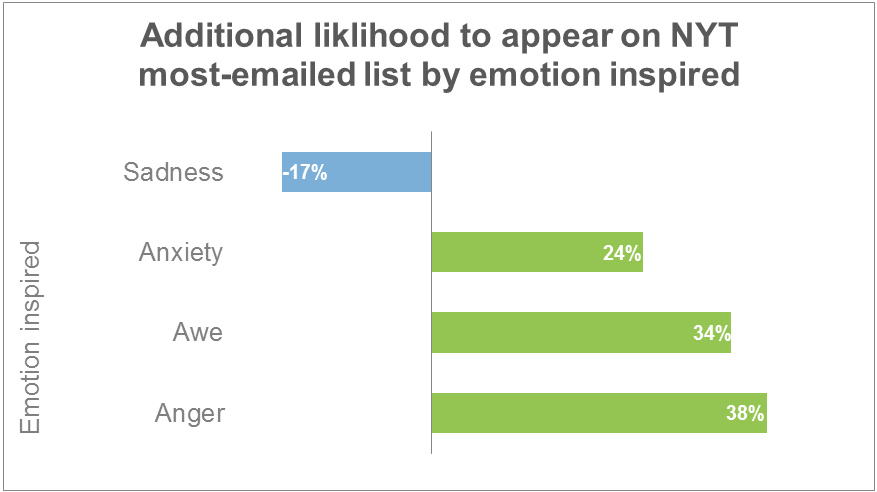
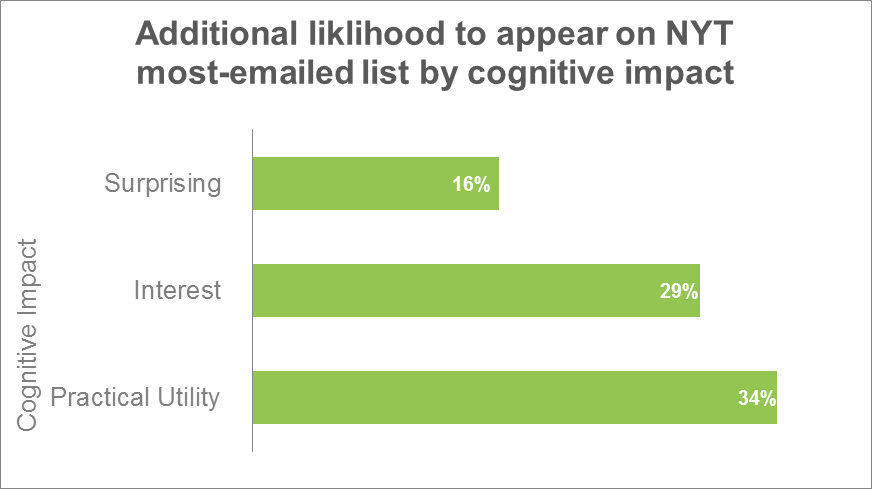
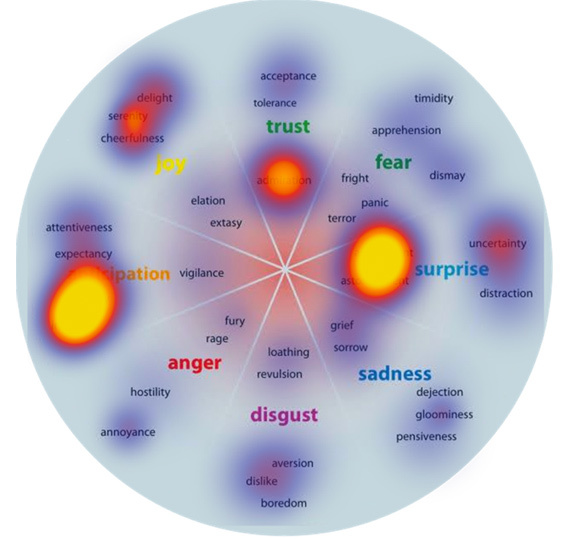

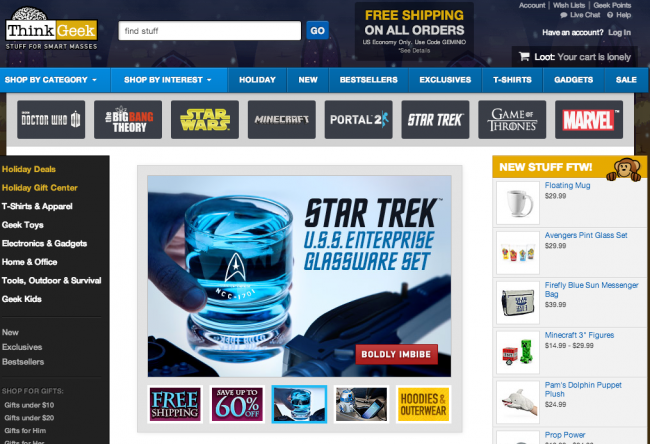

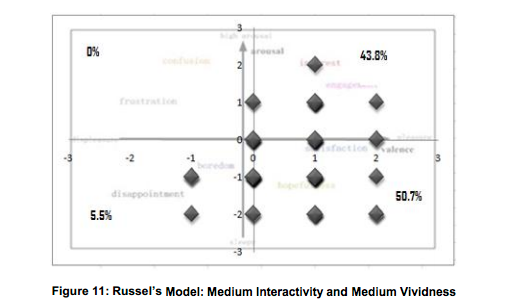
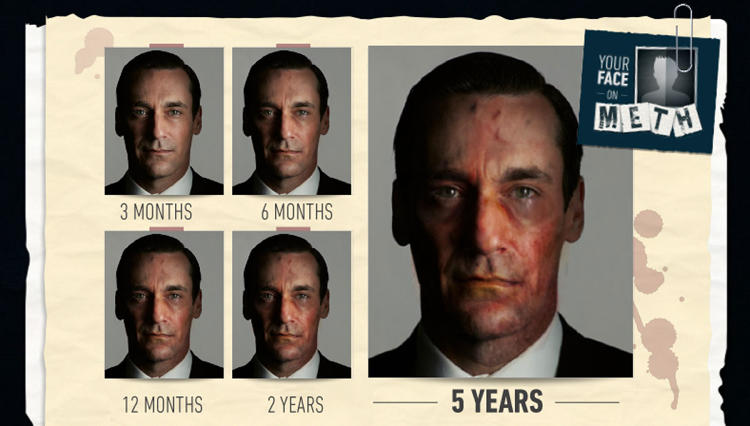

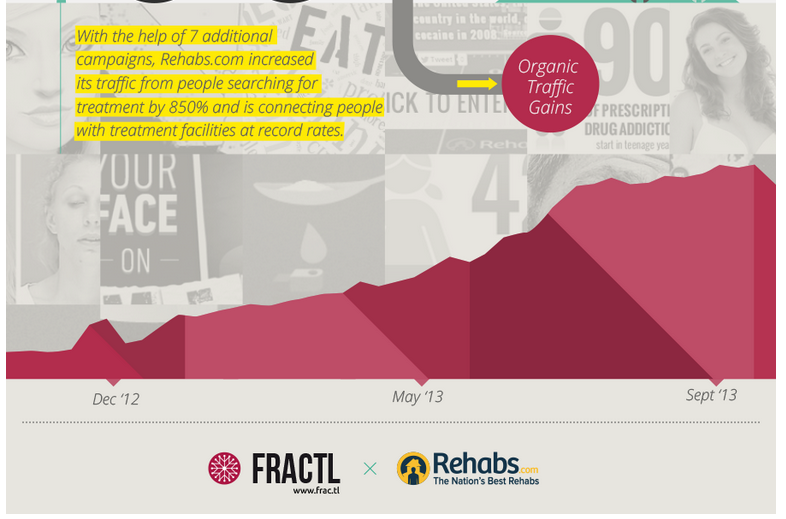


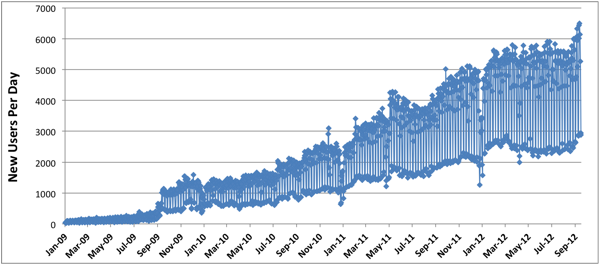
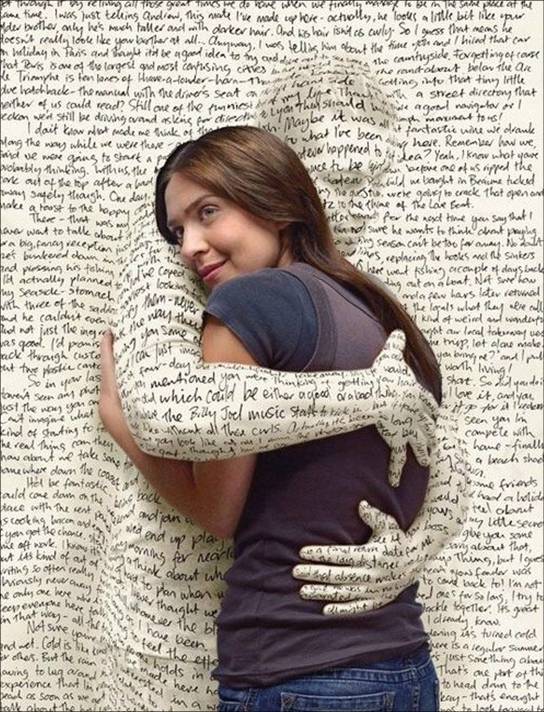

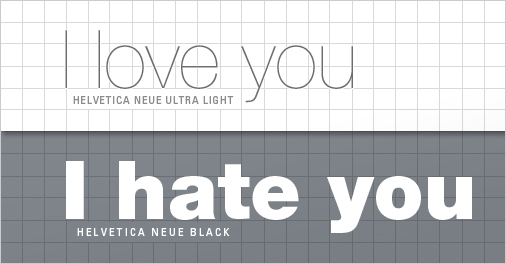

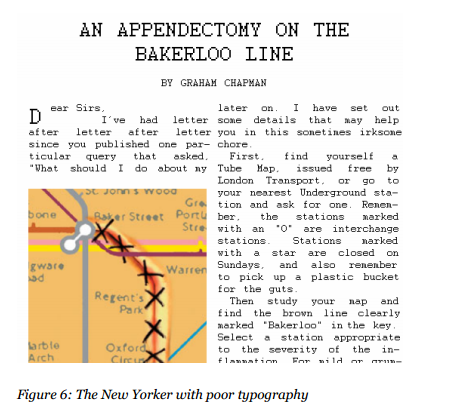
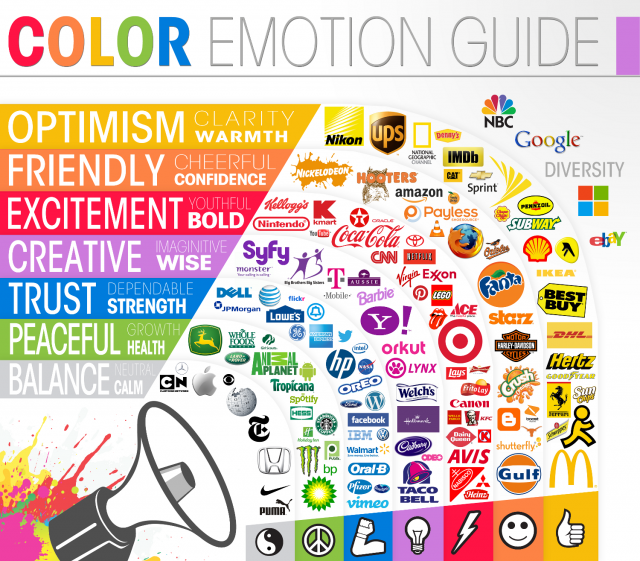


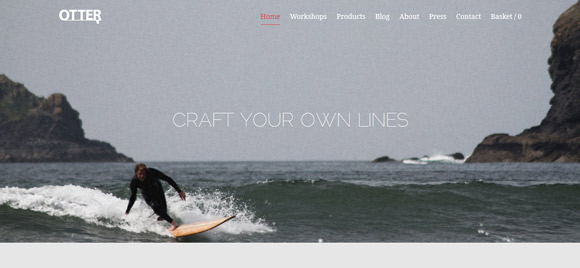




Great article Tommy. This page will definitely be bookmarked and shared with the team.
Keep up the great work.
Thanks Puya! I’m glad you got a lot out of it!
Emotions are key to everything that is human.
Thank you for this post. We would be very happy to collaborate with you if you wish to do so. Do not hesitate to try our emotion tracking technology applied combined with web analytics. Available through GetSmily.com
David from GetSmily (co-founder)
Very cool service you guys offer. Drop me an email at tommyisastrategist at gmail dot com, I’d love to talk to you more about the methodology you guys use!
Very well detailed out post Tommy.
Loved the Mailchimp example, they ve very recently changed theirs home page and that is also looking amazing and you could have also added that to the story.
Anyways, great post.
Really apprecieate you sharing this.
This is BY FAR the best article i have ever read on how to use emotions in sales & marketing !
Well researched and written. Very informative and actionable as well.
Thanks Tommy
Really intelligent post — emotions definitely play a huge role in copywriting/conversion rate optimization, but I would assume that different markets respond differently to each emotion. I guess the only way you figure out what works is through testing.
Not only would different approaches work in different markets, but also counter-intuitive emotions could work too.
I came across a study where Slugbooks, a text book site, used fun and interesting characters to “disarm” their student visitors who generally associate buying textbooks with a painful experience.
Thought that was interesting because it really showed the company understood the market. And it makes me wonder how well disarming would work in other areas as well
http://blog.usabilla.com/case-study-how-slugbooks-rebranded-through-emotional-design/
Thanks Yassin! I hope you can get a lot out of it!
Wonderfully smart article! I agree completely that everything one sees, hears and touches creates an emotional response in your target audience. From the look of the typography to the feel of the paper you use, it all creates an emotion. And this emotion generates sales.
Publishing houses got this down pretty well. A lot of intense thought goes into the typography, the font size, the feel of the book itself, etc. If it’s a novel about slavery, chances are the pages have torn edges to make the reader feel the sense of being torn or tarnished like a slave.
The same is true for marketing. All of these subtle nuances are massively overlooked and that’s mostly because they are an afterthought.
Thanks for sharing this! I really enjoyed it.
Thank you for this post! Definitely something to bookmark. I’ve been working on bringing together personality driven copy that’s made for conversions. I truly believe that you can be edgy and interesting and get your copy to do what it needs to do.
Really well written and stuffed full of useful information. Thanks.
I’ve little to add, other than a typo spot!
>>are affected by addition to alcohol and hard drugs
should be
>> are affected by addiction to alcohol and hard drugs
Well at least you know I read the whole thing carefully!
I’m confuse with create emotion and build trust… What is the different? Does if I create emotion also can build trust automatically?
It’s no big secret that emotion is one of the most effective means of selling something. So I agree, emotion IS essential to make more sales. It can trigger the buyer to necessary action. Thanks for sharing.
Excellent info on increasing sales. tks
Amazing article, mate. Deep in content and good references, and also fun to read. :)
Cheers!